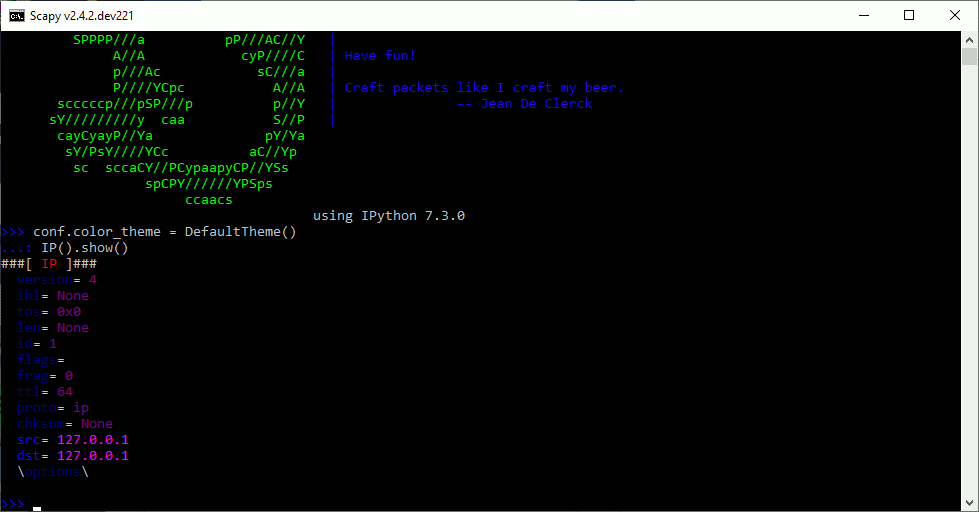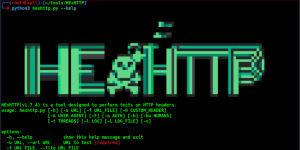Offensive Security Tool: Scapy

Reading Time: 2 Minutes
Offensive Security Tool: Scapy
Scapy
Scapy by secdev is a powerful Python-based interactive packet manipulation program and library.
It is able to forge or decode packets of a wide number of protocols, send them on the wire, capture them, store or read them using pcap files, match requests and replies, and much more. It is designed to allow fast packet prototyping by using default values that work.
It can easily handle most classical tasks like scanning, tracerouting, probing, unit tests, attacks or network discovery (it can replace hping, 85% of nmap, arpspoof, arp-sk, arping, tcpdump, wireshark, p0f, etc.). It also performs very well at a lot of other specific tasks that most other tools can’t handle, like sending invalid frames, injecting your own 802.11 frames, combining techniques (VLAN hopping+ARP cache poisoning, VoIP decoding on WEP protected channel, …), etc.
Scapy supports Python 2.7 and Python 3 (3.4 to 3.9). It’s intended to be cross platform, and runs on many different platforms (Linux, OSX, *BSD, and Windows).
This tool is very powerful for Pentesters and Red Teams for performing highly sophisticated and quick action when inside a network. From Capturing VoIP and decoding conversation, to poisoning techniques and wireless injection attacks – in order to assess someone’s internal network infrastructure and how exposed they can be.
See Also: Complete Offensive Security and Ethical Hacking Course
Getting started
Scapy is usable either as a shell or as a library. For further details, please head over to Getting started with Scapy, which is part of the documentation.
Scapy can easily be used as an interactive shell to interact with the network. The following example shows how to send an ICMP Echo Request message to github.com, then display the reply source IP address:
sudo ./run_scapy
Welcome to Scapy
>>> p = IP(dst="github.com")/ICMP()
>>> r = sr1(p)
Begin emission:
.Finished to send 1 packets.
*
Received 2 packets, got 1 answers, remaining 0 packets
>>> r[IP].src
'192.30.253.113'
See Also: Offensive Security Tools Collection: Red Teaming Tactics and Techniques
Resources
The documentation contains more advanced use cases, and examples.
Other useful resources:
- Scapy in 20 minutes
- Interactive tutorial (part of the documentation)
- The quick demo: an interactive session (some examples may be outdated)
- HTTP/2 notebook
- TLS notebooks
Installation
Scapy works without any external Python modules on Linux and BSD like operating systems. On Windows, you need to install some mandatory dependencies as described in the documentation.
On most systems, using Scapy is as simple as running the following commands:
git clone https://github.com/secdev/scapy
cd scapy
./run_scapy
To benefit from all Scapy features, such as plotting, you might want to install Python modules, such as matplotlib or cryptography. See the documentation and follow the instructions to install them.
See Also: Hacking stories: MafiaBoy, the hacker who took down the Internet









